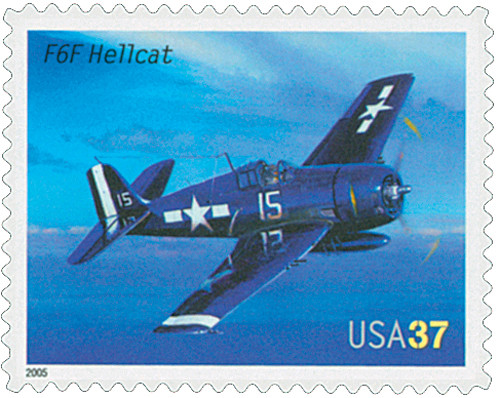
2005 37c Advances in Aviation: Boeing 247
# 3916 - 2005 37c Advances in Aviation: Boeing 247
$0.80 - $2.25
U.S. #3916
37¢ Model 247
American Advances in Aviation
37¢ Model 247
American Advances in Aviation
Issue Date: July 29, 2005
City: Oshkosh, WI
Printing Method: Lithographed
Color: Multicolored
City: Oshkosh, WI
Printing Method: Lithographed
Color: Multicolored
The first flight of Boeing’s Model 247 on February 8, 1933, ushered in a new era in commercial aviation. Until then, airliners were small, inefficient, single-engine biplanes. The 247 was the first modern passenger airliner, a streamlined monoplane.
The plane’s innovative features included an all-metal skin, twin engines, autopilot, pneumatically operated de-icing equipment, retractable landing gear, and cabin air-conditioning. There was one design quirk. Since the wing’s main support passed right through the cabin area, some passengers had to step over a large, leather-covered hump in the aisle to reach their seats.
The Model 247 took twenty hours to fly between coasts (including seven refueling stops). That was still almost eight hours shorter than any previous airliner.
The 247 was briefly the most advanced air transport in the world – the first “three-mile-a minute” airliner. However, because it carried only ten passengers, the Douglas DC series, with stronger engines and more seating, was soon able to surpass it.
On October 10, 1933, a United Airlines 247 made U.S. and airline history. It was the victim of the first proven case of sabotage of an airliner, destroyed by a timed explosive device over Chesterton, Indiana.
U.S. #3916
37¢ Model 247
American Advances in Aviation
37¢ Model 247
American Advances in Aviation
Issue Date: July 29, 2005
City: Oshkosh, WI
Printing Method: Lithographed
Color: Multicolored
City: Oshkosh, WI
Printing Method: Lithographed
Color: Multicolored
The first flight of Boeing’s Model 247 on February 8, 1933, ushered in a new era in commercial aviation. Until then, airliners were small, inefficient, single-engine biplanes. The 247 was the first modern passenger airliner, a streamlined monoplane.
The plane’s innovative features included an all-metal skin, twin engines, autopilot, pneumatically operated de-icing equipment, retractable landing gear, and cabin air-conditioning. There was one design quirk. Since the wing’s main support passed right through the cabin area, some passengers had to step over a large, leather-covered hump in the aisle to reach their seats.
The Model 247 took twenty hours to fly between coasts (including seven refueling stops). That was still almost eight hours shorter than any previous airliner.
The 247 was briefly the most advanced air transport in the world – the first “three-mile-a minute” airliner. However, because it carried only ten passengers, the Douglas DC series, with stronger engines and more seating, was soon able to surpass it.
On October 10, 1933, a United Airlines 247 made U.S. and airline history. It was the victim of the first proven case of sabotage of an airliner, destroyed by a timed explosive device over Chesterton, Indiana.
















